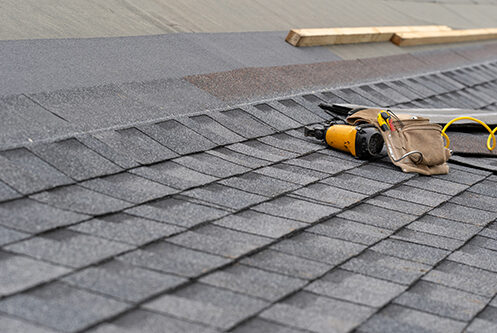When choosing a new roof for your Little Rock, AR home, factors like cost, aesthetics, and durability are vital. However, roof venting is equally important. The right roof vents will limit the likelihood of temperature and humidity extremes in your attic, prevent problems with ice damming, and extend the life span of your entire roofing system. From cutting your home energy bill to staving off problems like wood rot and mold, these features play a crucial role in optimizing roof performance. With ridge vents and box vents ranking among the most popular choices, you’ll want to know how each measures up.
What Are Box Vents?
Box vents are best suited to roofs with relatively low slopes. Often referred to as turtle vents, flat vents, louvers, or low-profile vents, box vents are typically composed of metal, hard plastic, or both metal and plastic combined. They’re installed just at or below roof peaks. By leveraging natural convection, they offer a passive way for attic heat to escape.
The Benefits and Drawbacks of Box Vents
Box vents are affordable and have very simple designs. This makes them easy to install and easy to maintain. Moreover, when compared to active roof venting systems, these passive features are incredibly quiet. Classified as static vents, box vents have absolutely no moving parts. However, they’re prone to leaking in high-moisture areas, particularly as they age. With time, they can also become accessible ingress points for many small-sized pests.
Installation mistakes can make box vents less than effective in otherwise ideal applications. For instance, positioning these vents too far below roof peaks will prevent trapped heat at the roof’s highest point from exiting the building. Given that heat rises, this can leave the topmost portion of your attic sweltering.
What Are Ridge Vents?
Just as their name implies, ridge vents are installed on roof ridges. They form a long, unbroken vent that travels just beneath the upper roof shingles. Their positioning gives shingles an extra lift that’s often considered aesthetically pleasing. Usually comprised of mesh-like material or aluminum, ridge vents optimize airflow at the roof’s exterior by drawing excess humidity and heat out of the attic.
The Benefits and Drawbacks of Ridge Vents
Compared to box vents, ridge vents are installed in a more optimal location for ensuring adequate ventilation across the entire roof. Given that heat rises, the roof ridge is where most attic heat collects. The standard location of ridge vents also makes installation mistakes less likely.
Although box vents are relatively easy to install, ridge vents are even simpler still. These projects are less invasive and far less likely to introduce access points for moisture or pests. With ridge vents, there’s no need to cut into existing roof shingles or make alterations to the roof’s underlayment. Given that roof valleys, protrusions, and vents are among the most common areas for roof leaks, opting for ridge vents greatly reduces the risk of indoor moisture damage.
However, ridge vents are not without drawbacks. In exceedingly cold and snowy areas, ridge vents can leave attics filled with snow and other freezing precipitation. These vents are also unsuitable for some roof types, such as pyramid roofs, flat roofs, and other ridge-free roof designs.
Little Rock Weather and Its Impact on Roof Venting Systems
Weather in Little Rock allows for both vent types. Although this region does see some snow, it’s rarely enough to put attic spaces at risk. Snowy winters are few and far between in our area. Thus, your neighborhood probably has homes with box vents and homes with ridge vents instead. The one important thing to note is that you’ll never see box and ridge vents used together. The common rule of thumb is to have just one vent type for every shared attic space.
Finding Your Roof’s Ideal Venting System
For most homeowners, the biggest appeal of box vents is their low upfront cost. Both vent types can last between 20 and 30 years, and both are usually replaced when replacing roof shingles. While ridge vents are the top performer in keeping attics well ventilated, not every roofing style supports their installation. In addition to building layouts, roof designs, weather conditions, and curbside aesthetics, roofers consider homeowners’ efficiency goals, current home envelopes, and other factors before choosing a venting style.
For more than a decade, we’ve proudly served Little Rock, AR and the surrounding cities. We offer emergency roof repairs, storm damage repairs, roof inspections, and total roof replacement. To learn more about roof vents or to find the right vent type for your home, contact us at Big Rock KangaROOF today.
